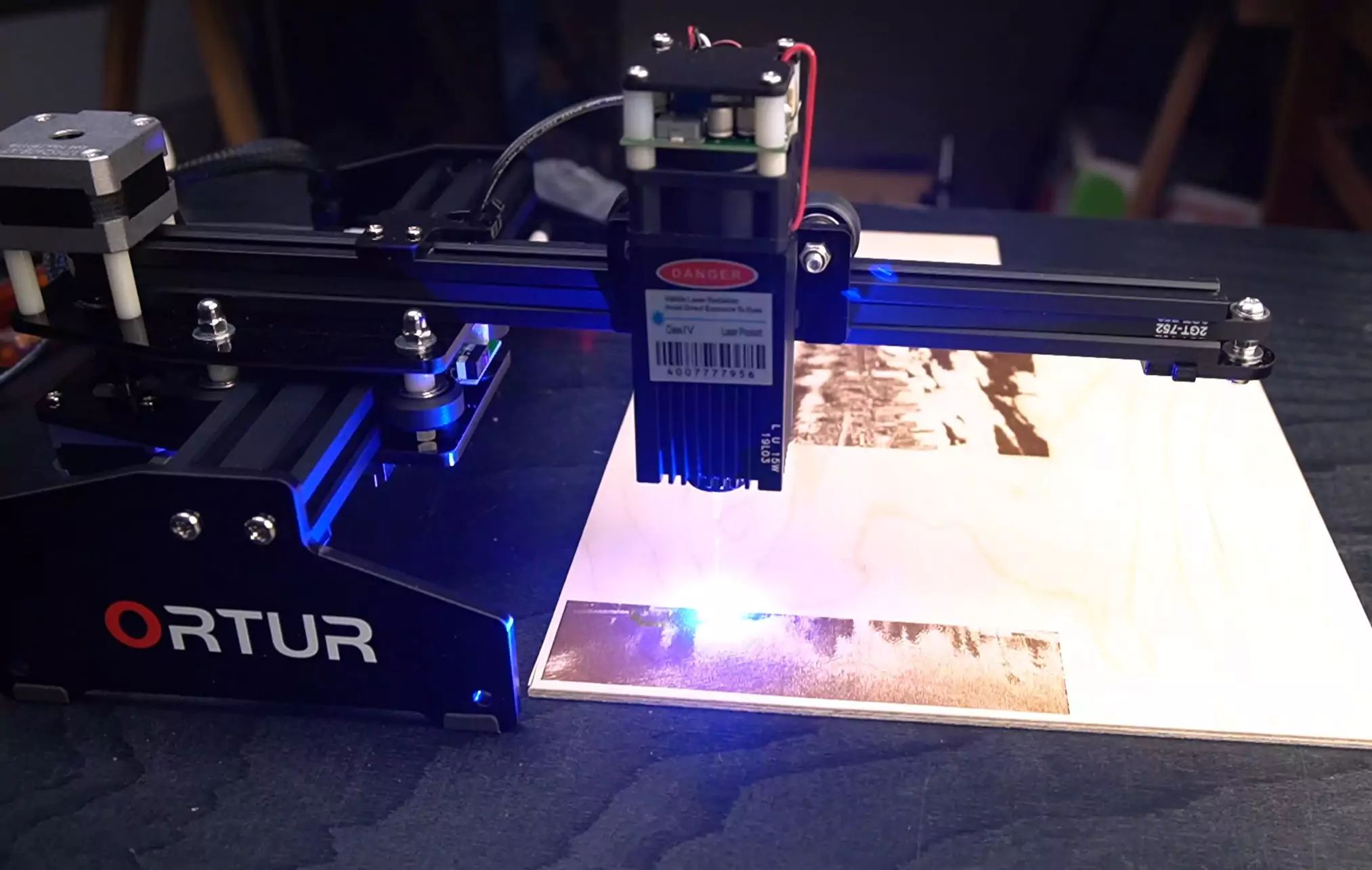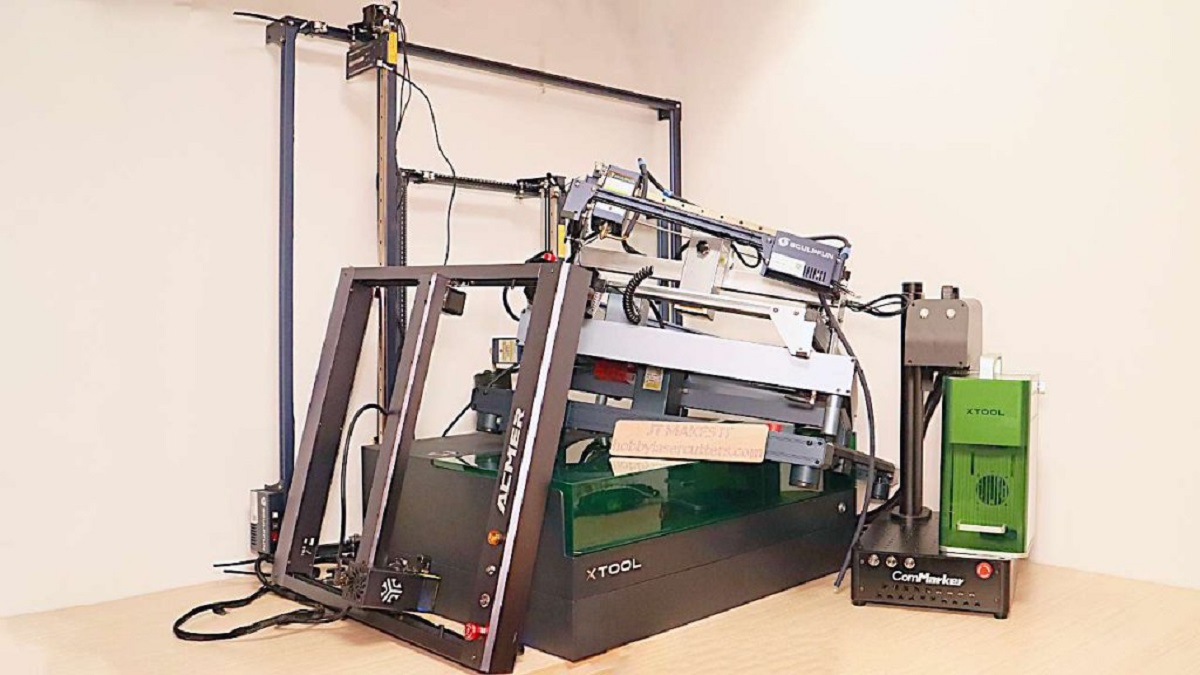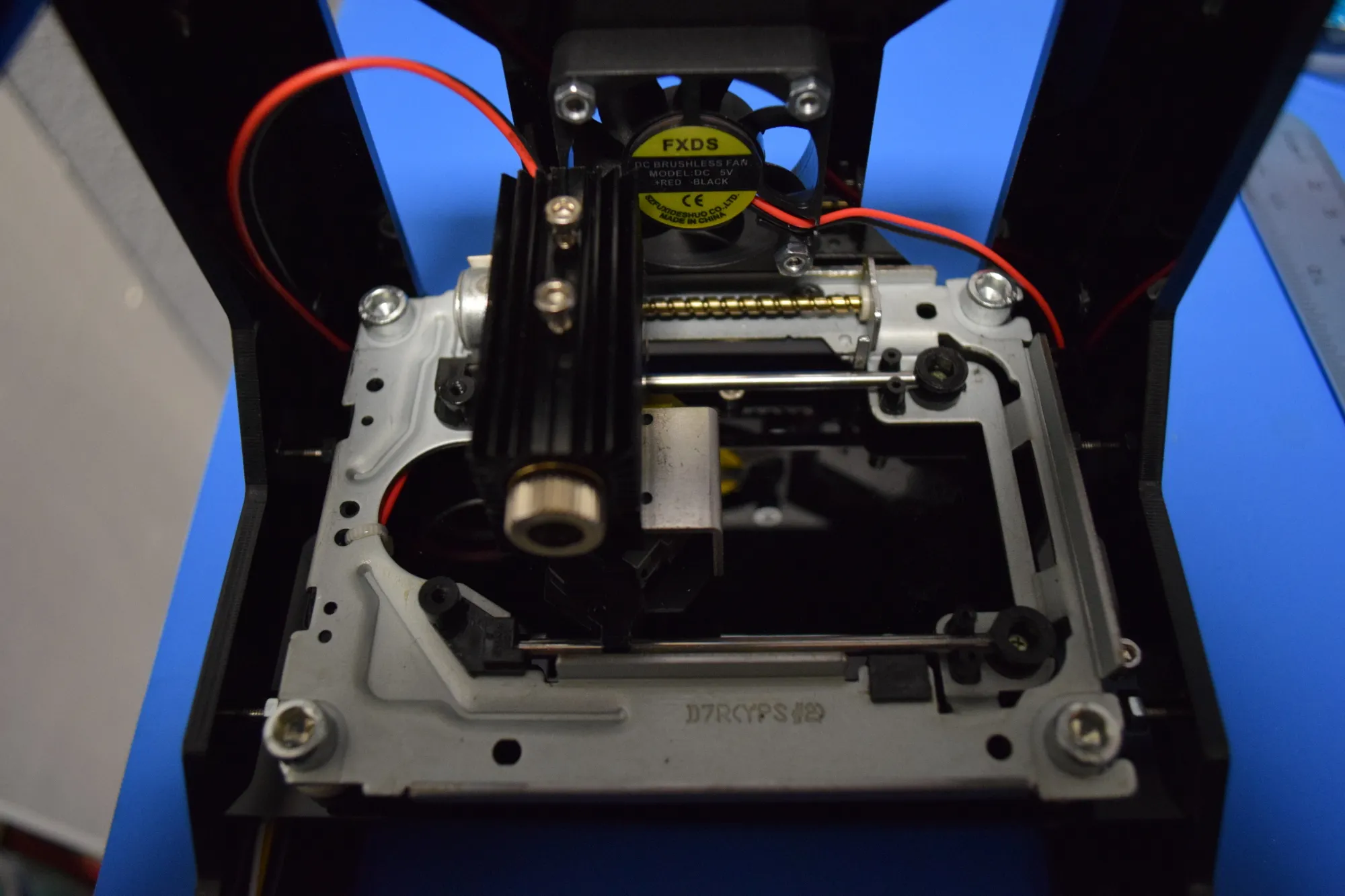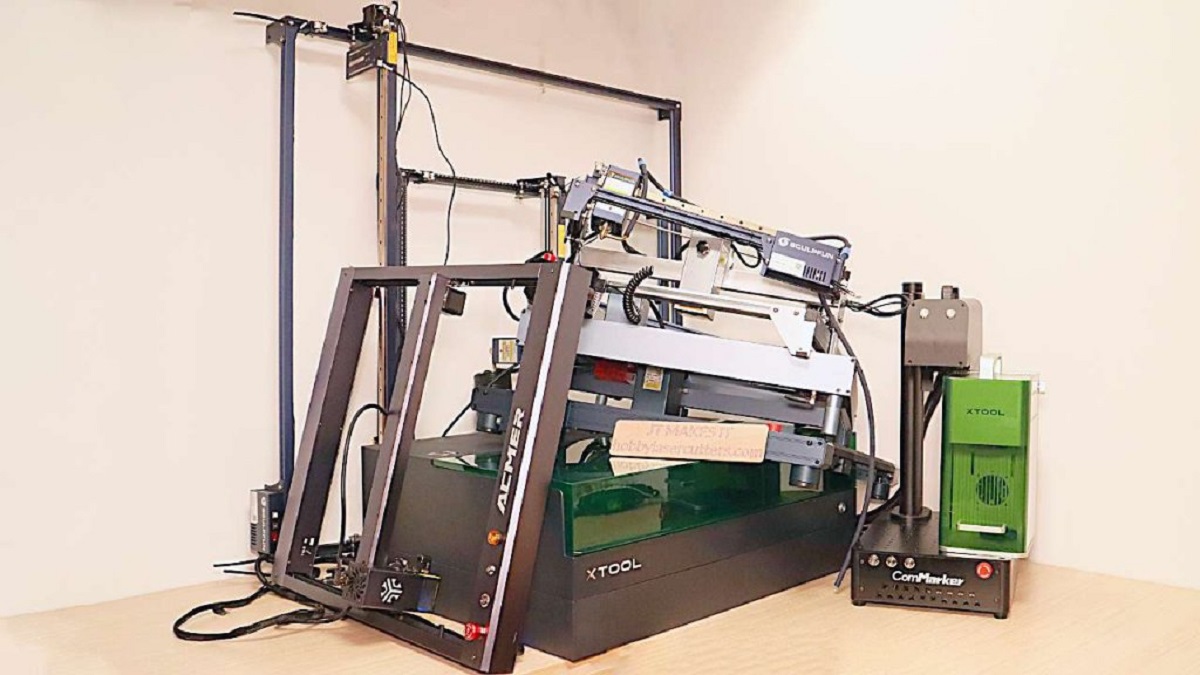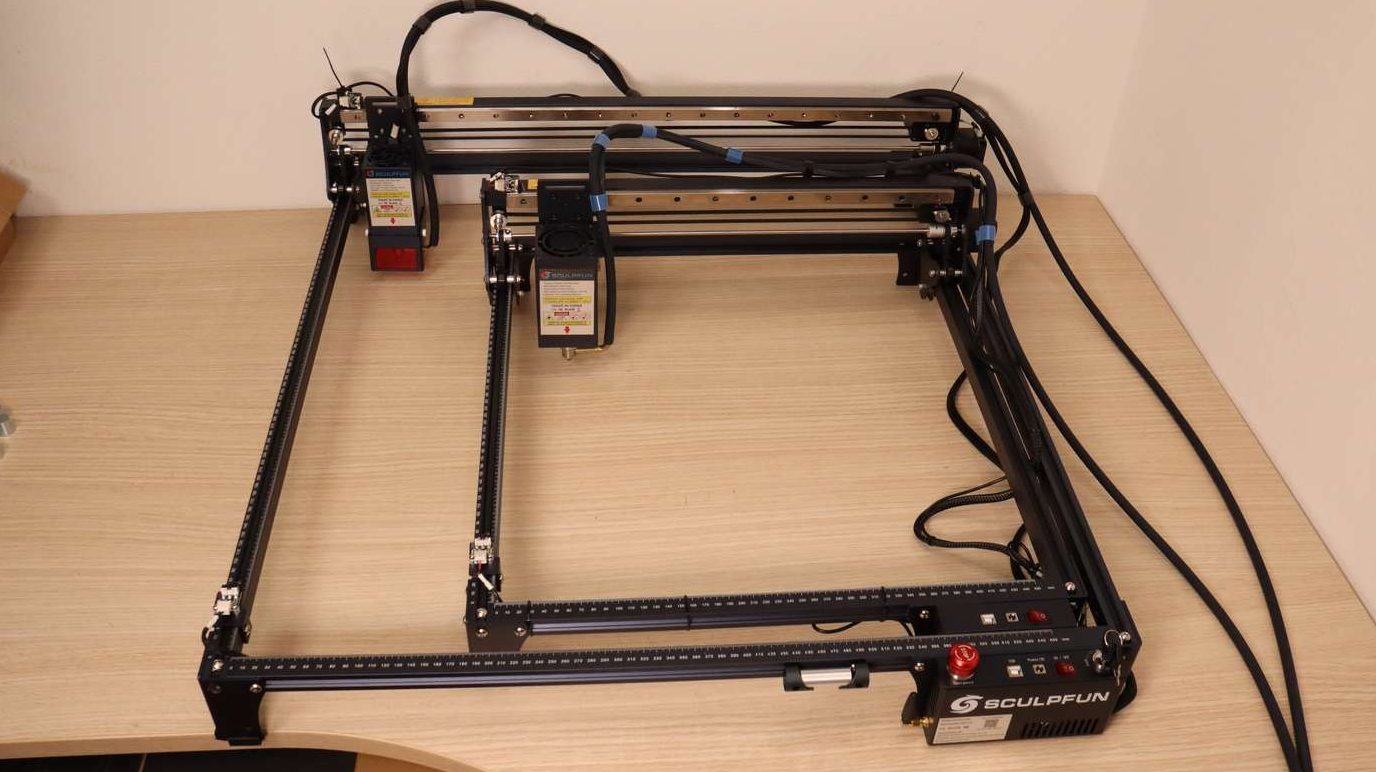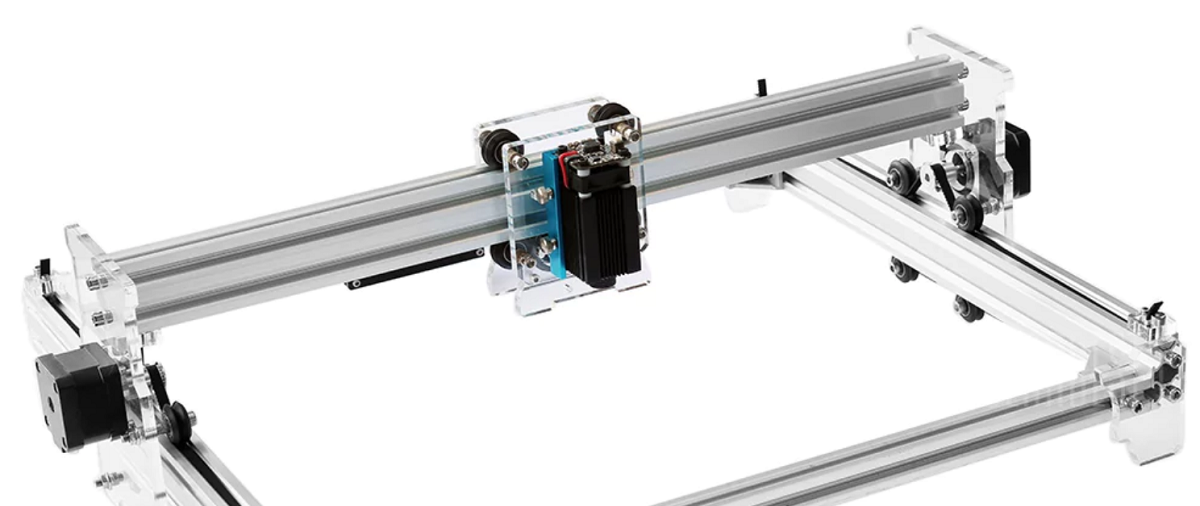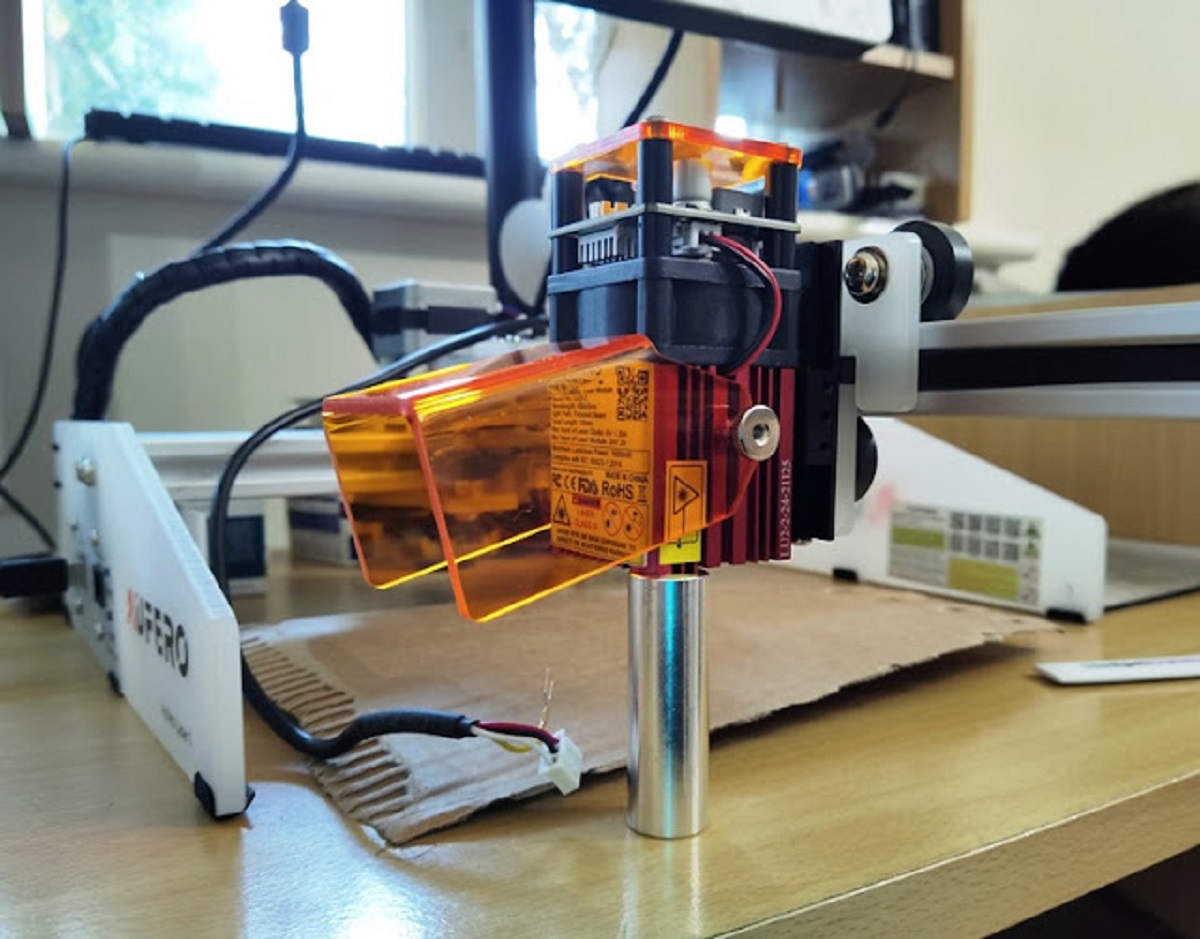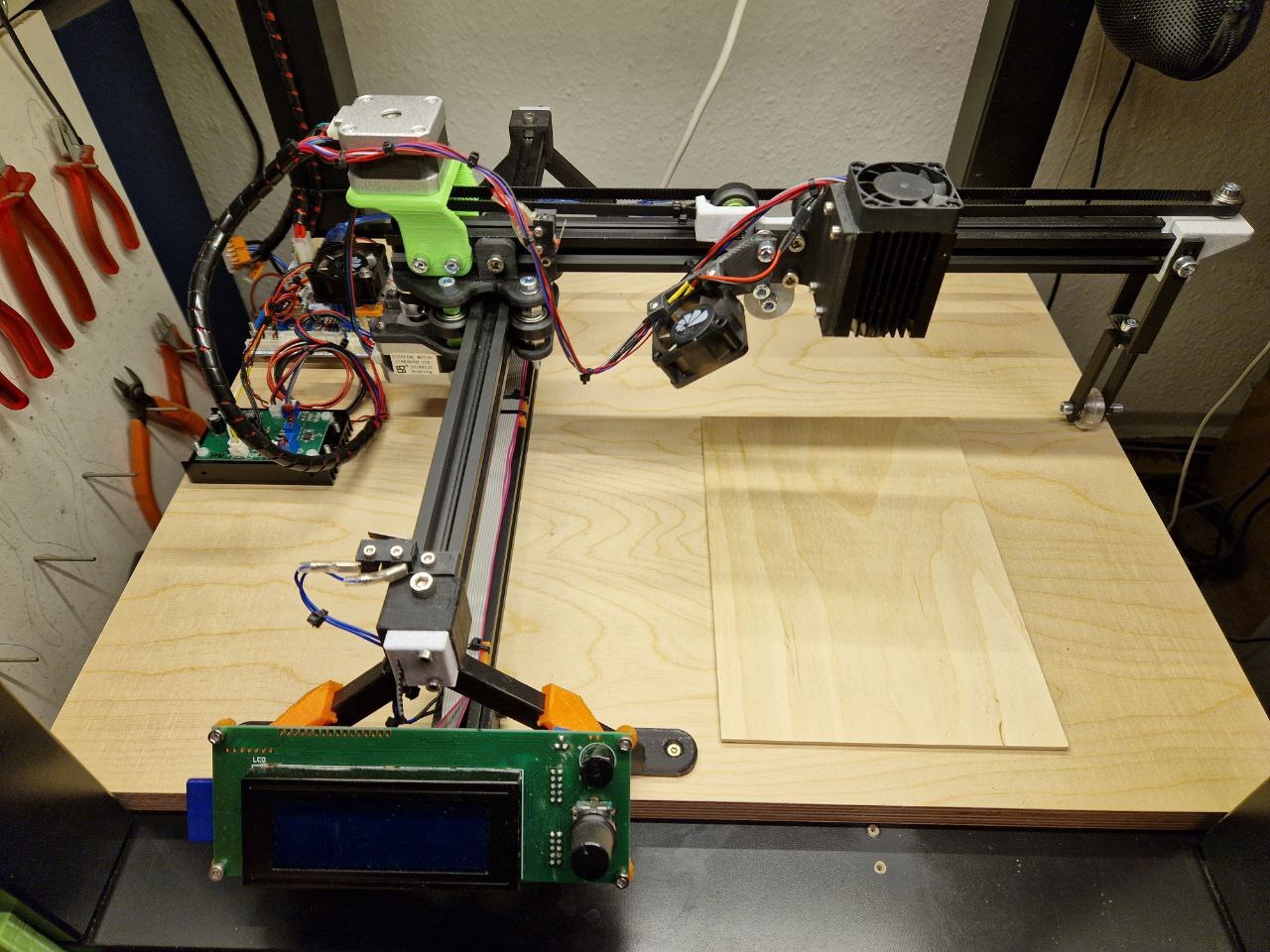Introduction
Laser engraving has become increasingly popular in various industries, from crafting and customization to manufacturing and advertising. This precise and efficient technique allows for the etching of intricate designs, logos, and text onto a variety of materials, including wood, metal, acrylic, and leather.
The laser used in engraving machines is a powerful tool that emits a concentrated beam of light. One of the key factors that determines the performance and capabilities of a laser engraver is the wattage, commonly referred to as the milliwatts (MW). Understanding the role of MW in a laser engraver is essential for achieving optimal results and maximizing the potential of this versatile technology.
In this article, we will delve into the importance of MW in laser engraving, the factors that determine its value, and how to choose the right MW for your intended application. We will also address some common misconceptions surrounding MW in laser engravers. By the end, you will have a clearer understanding of the role MW plays in achieving the desired outcomes in laser engraving.
Understanding Laser Engraving
Laser engraving is a subtractive manufacturing process that utilizes a laser beam to remove material from the surface of an object, leaving behind a permanent and precise mark. The laser beam vaporizes or melts the material, creating a controlled depth and width of the engraved area.
Compared to traditional engraving methods, laser engraving offers numerous advantages. It is highly accurate, allowing for intricate designs and fine details to be engraved with precision. The process is also non-contact, which means there is no physical contact between the engraver and the material, eliminating the risk of damage or distortion.
One of the key benefits of laser engraving is its versatility. It can be used on a wide range of materials, including wood, plastic, glass, leather, and even metals like stainless steel and aluminum. This makes laser engraving suitable for various applications, such as personalization of products, industrial marking, signage production, and artistic creations.
The laser engraving process begins with a design file, which is uploaded to the engraving machine. The machine then uses a focused laser beam to trace the design and remove the material in the specified areas. The depth and intensity of the engraving can be controlled based on the power of the laser beam.
It should be noted that laser engraving is different from laser marking or laser etching. While both processes use a laser beam to create marks on materials, laser engraving involves removing material, creating a visible indentation, while laser marking and etching typically alter the surface of the material through color change or chemical reaction.
Overall, laser engraving offers a precise, efficient, and versatile solution for creating permanent marks and designs on various materials. The power or MW of the laser beam plays a crucial role in determining the quality and speed of the engraving process, which we will explore further in the following sections.
What is the MW in a Laser Engraver?
Milliwatts (MW) is a unit of measurement that refers to the power output of a laser engraver. It indicates the intensity or strength of the laser beam being emitted by the engraving machine. In simple terms, the MW value represents how much energy the laser beam can deliver per unit of time.
Higher MW values indicate more powerful laser engravers, which are capable of delivering a stronger beam that can engrave materials more quickly and effectively. Laser engravers are available in a range of MW options, from low-power machines typically used for hobbyist projects to high-power industrial-grade machines used for large-scale manufacturing and production.
The MW value of a laser engraver is largely determined by the wattage of the laser source. Common power options include 5W, 10W, 40W, and even higher. It’s important to note that the MW value alone doesn’t provide a complete picture of the engraver’s capabilities. Other factors, such as the laser frequency, beam quality, and focus, also contribute to the overall performance of the engraving machine.
When considering the MW of a laser engraver, it’s essential to match the power to the specific needs of your engraving projects. Higher MW values are ideal for cutting through thicker or harder materials, as well as for achieving faster engraving speeds. On the other hand, lower MW values are generally more suitable for lighter materials or projects that require finer details and intricate designs.
Choosing the right MW for your laser engraver involves assessing the materials you will be working with and the desired outcome of your engraving projects. It’s also important to consider your budget and the intended level of usage. A higher MW engraver may provide greater flexibility and speed, but it may also come with a higher price tag and require additional safety precautions.
Understanding the MW of a laser engraver is crucial for selecting the appropriate machine for your specific engraving needs. In the next section, we will explore the importance of MW in laser engraving and the impact it has on the final results.
Importance of MW in Laser Engraving
The wattage or MW of a laser engraving machine plays a significant role in determining the quality, efficiency, and versatility of the engraving process. The power of the laser beam directly impacts the speed and depth at which materials can be engraved, as well as the range of materials that can be effectively engraved.
One of the primary factors influenced by the MW value is the engraving speed. Higher MW engravers can deliver more energy per unit of time, allowing for faster and more efficient engraving. This is particularly important in large-scale manufacturing or production environments where time is a crucial factor.
Moreover, the MW value also affects the depth of the engraving. Higher MW engravers have the ability to remove more material from the surface, resulting in deeper engravings. This is advantageous when engraving materials like wood or acrylic, where a more pronounced and noticeable engraving is desired.
Another aspect influenced by the MW in laser engraving is the range of materials that can be engraved. Higher MW engravers can handle a wider variety of materials, including thicker or harder materials like metal or stone. These materials require more power to be effectively engraved, so a higher MW engraver is essential for achieving satisfactory results.
On the other hand, lower MW engravers are more suitable for delicate materials or projects that require finer details. For instance, when working with thin fabrics or engraving intricate designs on jewelry, a lower MW engraver allows for greater precision without compromising the material’s integrity.
In addition to speed, depth, and material compatibility, the MW value also impacts the overall lifespan and durability of the engraving machine. Higher MW engravers are generally built to handle heavy-duty usage, making them more suitable for demanding and continuous engraving operations.
Understanding the importance of MW in laser engraving allows you to select the appropriate engraving machine that aligns with your specific requirements. In the next section, we will discuss the factors that determine the MW in laser engravers, providing insights into how you can find the right MW for your engraving projects.
Factors That Determine MW in Laser Engravers
Several factors contribute to the determination of the MW value in laser engravers. These factors play a crucial role in ensuring that the engraving machine can deliver the desired power output for specific engraving tasks. Understanding these factors can help you make an informed decision when selecting a laser engraver with the appropriate MW for your needs.
1. Laser Source: The type and quality of the laser source used in the engraving machine are key factors in determining the MW output. Different types of lasers, such as CO2, fiber, or diode lasers, have varying power capabilities. Therefore, the MW value of the engraver heavily relies on the type and wattage of the laser source.
2. Hardware and Optics: The hardware components, including lenses and mirrors, affect the power efficiency and transmission of the laser beam. High-quality optics and well-designed hardware ensure that the maximum power is delivered to the engraving surface, resulting in an optimized MW output.
3. Cooling System: Laser engravers generate heat during operation, and an efficient cooling system is essential for maintaining the performance and stability of the laser source. A reliable cooling system prevents the laser from overheating, which can negatively impact the power output and overall longevity of the engraver.
4. Power Supply: The power supply unit of the engraver is responsible for delivering the necessary energy to the laser source. It needs to be robust and stable to ensure consistent and accurate power output, directly affecting the MW value of the engraver.
5. Safety Considerations: Higher MW engravers come with increased safety considerations. A laser engraver with a higher MW output requires appropriate safety measures, such as enclosed work areas, interlock mechanisms, and protective gear for the operator. These safety features ensure the safe and proper use of the machine.
6. Cost and Budget: The cost of laser engravers typically increases with higher MW values. Determining your budget and understanding your specific engraving needs can help you strike the right balance between cost and functionality, allowing you to choose an engraver with an optimal MW value.
Consideration of these factors allows you to select a laser engraver with the appropriate MW for your specific needs. In the next section, we will explore how to find the right MW for your laser engraving projects.
Finding the Right MW for Your Laser Engraver
Choosing the right MW value for your laser engraver is essential for achieving optimal results and maximizing the capabilities of the machine. Consider the following factors to ensure that you select an engraver with the appropriate MW for your specific engraving projects:
1. Material Compatibility: Consider the types of materials you will be engraving. If you primarily work with softer materials like wood or acrylic, a lower MW engraver may be sufficient. However, if you plan to engrave harder materials like metal or stone, a higher MW engraver is recommended to ensure efficient and effective engraving.
2. Engraving Speed: Evaluate the speed at which you need to complete your engraving projects. If time is of the essence, a higher MW engraver will allow for quicker engraving speeds. However, if you prioritize precision and intricate details over speed, a lower MW engraver may be more suitable.
3. Desired Depth and Detail: Consider the depth of the engraving you require. Higher MW engravers are capable of achieving deeper engravings, whereas lower MW engravers are better suited for shallow or fine detailing. Determine the level of depth and level of detail needed for your projects and choose the MW value accordingly.
4. Budget and Intended Use: Determine your budget for the laser engraver, as higher MW machines typically come with a higher price tag. Consider the level of usage as well – if you require an engraver for occasional personal projects, a lower MW machine might suffice. However, if you have demanding industrial or commercial needs, investing in a higher MW engraver may be necessary for optimal performance and durability.
5. Safety Considerations: Keep in mind the safety requirements associated with higher MW engravers. These machines require additional safety precautions, and you should ensure that you have the appropriate safety measures and equipment in place to operate the engraver safely.
By considering these factors, you can determine the ideal MW value for your laser engraver. Remember that finding the right MW involves striking a balance between the desired engraving outcomes, material compatibility, budget, and safety considerations.
Next, we will explore the effects that MW can have on the results of your laser engraving projects.
The Effects of MW on Laser Engraving Results
The MW value of a laser engraver has a significant impact on the overall results and outcomes of the engraving process. Understanding the effects of MW can help you make informed decisions and achieve the desired engraving quality. Here are some key effects that MW has on laser engraving results:
1. Engraving Speed: Higher MW engravers can deliver more power, enabling faster engraving speeds. This means that you can complete engraving projects in less time, making higher MW engravers suitable for large-scale production or time-sensitive tasks. On the other hand, lower MW engravers are better suited for projects that prioritize precision and intricate detailing over speed.
2. Depth and Intensity: The MW value directly affects the depth and intensity of the engraving. Higher MW engravers can remove more material from the surface, resulting in deeper and more pronounced engravings. This is advantageous when working with materials like wood or plastic, where a more visible and tactile engraving is desired. Lower MW engravers, on the other hand, are suitable for creating fine details and shallow engravings.
3. Material Compatibility: The MW value also determines the range of materials that can be effectively engraved. Higher MW engravers are capable of engraving thicker and harder materials such as metals, while lower MW engravers are more suitable for softer materials like fabrics or thin plastics. Choosing the appropriate MW based on the materials you work with ensures that you achieve the desired engraving quality without damaging the material.
4. Engraving Precision: Higher MW engravers can provide greater engraving precision when it comes to straight lines and corners. The increased power allows for sharper and more defined edges, resulting in cleaner and more accurate engravings. However, it is worth noting that the focus and quality of the laser beam also play a role in achieving precise details.
5. Heat Generation: Higher MW engravers generate more heat during operation. This can be advantageous when working with certain materials, as the heat helps to enhance the engraving process. However, it’s important to be mindful of the heat generated, especially when working with sensitive or heat-sensitive materials. Proper cooling and ventilation should be maintained to prevent potential damage or distortion.
Understanding these effects of MW on laser engraving results allows you to choose the appropriate MW value for your specific projects. Consider your desired speed, depth, precision, and material compatibility to select an engraver with the MW that aligns with your engraving needs.
In the next section, we will address some common misconceptions about MW in laser engravers to provide a clearer understanding of this important aspect of laser engraving technology.
Common Misconceptions about MW in Laser Engravers
When it comes to the MW value in laser engravers, there are several misconceptions and misunderstandings that can lead to confusion among users. Let’s address some of the common misconceptions:
1. Higher MW is always better: While higher MW engravers are often associated with more power and capabilities, it doesn’t necessarily mean they are always better for every engraving project. The ideal MW value depends on various factors like materials, desired engraving speed, and level of detail. It’s important to consider your specific requirements and choose the MW value that aligns with your needs.
2. Higher MW can engrave any material: While higher MW engravers can handle a wider range of materials, not every material can be engraved with higher power. For example, extremely heat-sensitive materials may require lower MW engravers to prevent damage or distortion. It’s important to understand the compatibility between the material and the MW value to achieve optimal results.
3. Higher MW always results in better engraving quality: While higher power can provide deeper engravings and faster speeds, engraving quality also depends on other factors like beam quality, focus, and the overall engraving machine’s capabilities. A high MW engraver with poor optics or inadequate cooling may not necessarily deliver superior engraving quality. It’s important to consider the overall performance of the engraver, not just the MW value.
4. MW value is the only factor that matters: Although MW is a significant factor, other factors like laser frequency, beam quality, and hardware components also contribute to the overall performance of a laser engraver. Neglecting these factors and solely focusing on the MW value can lead to suboptimal results and limited engraving capabilities.
5. Higher MW is always more expensive: While it’s true that higher MW engravers often come with a higher price tag, it’s not always the case. The cost of a laser engraver depends on various factors, including the brand, features, and additional accessories. It’s possible to find higher MW engravers at a competitive price point or to invest in a lower MW engraver that meets your specific engraving needs without breaking the bank.
By addressing these common misconceptions, it becomes clearer that the MW value is just one aspect to consider when choosing a laser engraver. Understanding the broader aspects of laser engraving technology can help you make more informed decisions and achieve optimal results in your engraving projects.
In the concluding section, we will summarize the key points discussed in this article and emphasize the importance of selecting the right MW value for your laser engraver.
Conclusion
In conclusion, the milliwatt (MW) value of a laser engraver is a crucial factor in determining the quality, efficiency, and versatility of the engraving process. Understanding the role of MW in laser engraving allows you to make informed decisions and achieve the desired engraving outcomes.
We explored the various aspects of MW in laser engravers, including its definition and the importance it holds in the engraving process. We discussed how MW affects engraving speed, depth, material compatibility, precision, and heat generation. It is essential to consider these factors when choosing the right MW for your specific engraving projects.
Additionally, we addressed common misconceptions surrounding MW in laser engravers, emphasizing the need to look beyond just the MW value and consider other factors like laser frequency, optics, and cooling systems. This holistic approach ensures that you select an engraver that aligns with your specific engraving needs and achieves optimal results.
By carefully considering the material compatibility, desired speed and depth, budget, and safety considerations, you can choose an engraver with the appropriate MW value. Whether you’re a hobbyist, small business owner, or involved in large-scale manufacturing, finding the right MW value is crucial for achieving high-quality and efficient laser engravings.
As technology continues to advance, laser engraving has become a valuable tool across various industries. Understanding the role of MW in laser engravers is essential for harnessing the full potential of this versatile technology.
So, before embarking on your next engraving project, take the time to assess your requirements and match them with the appropriate MW value. This will ensure that you have the right tool in your hands to bring your creative ideas to life and achieve remarkable results in your laser engraving endeavors.







